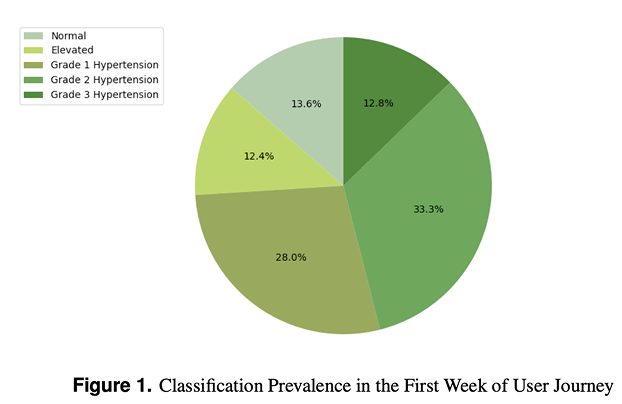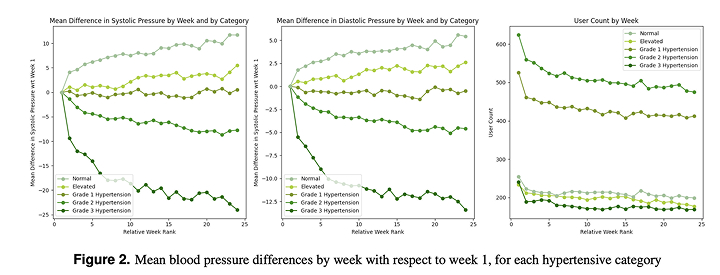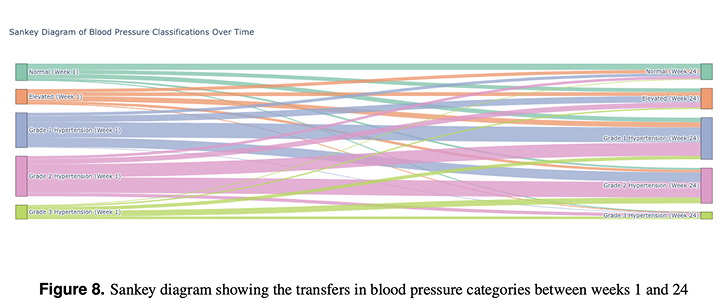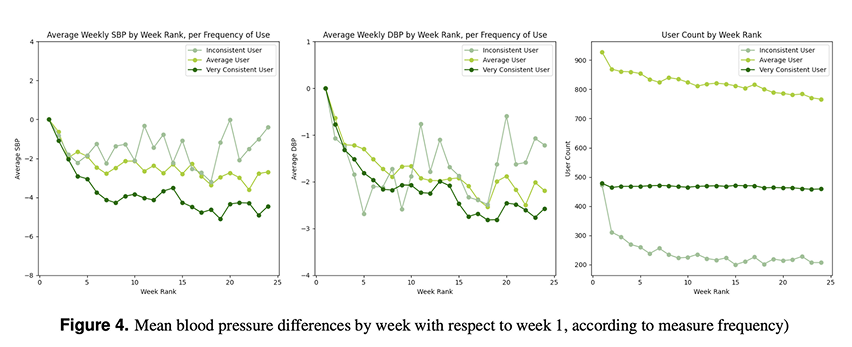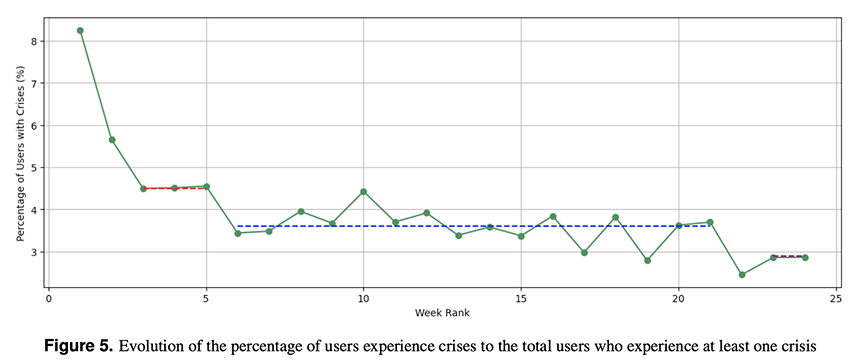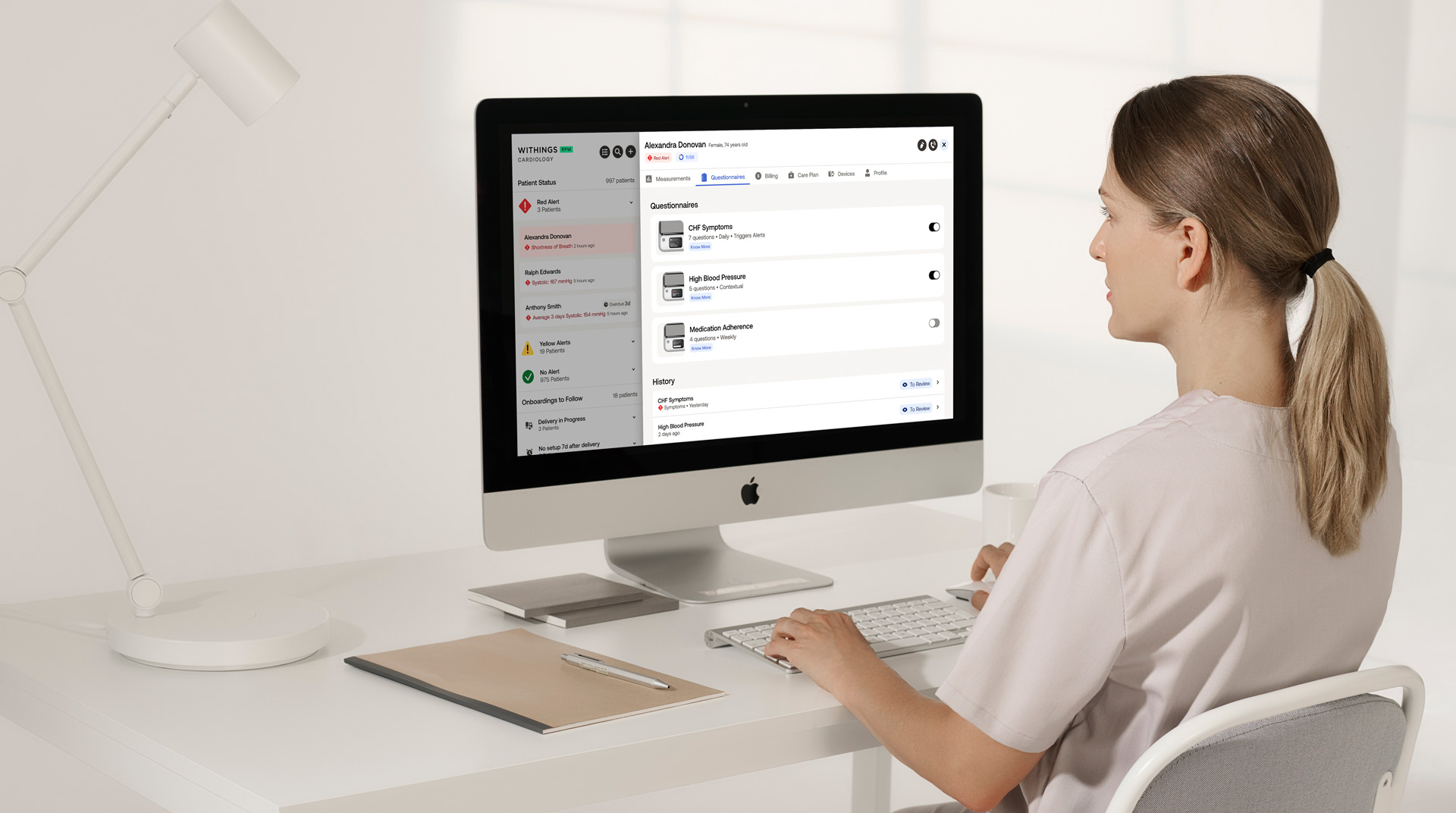WP_Query Object
(
[query] => Array
(
[post_type] => post
[post_status] => publish
[orderby] => date
[order] => DESC
[ignore_sticky_posts] => 1
[post__not_in] => Array
(
[0] => 1982
)
[cat] => 18
[posts_per_page] => 3
)
[query_vars] => Array
(
[post_type] => post
[post_status] => publish
[orderby] => date
[order] => DESC
[ignore_sticky_posts] => 1
[post__not_in] => Array
(
[0] => 1982
)
[cat] => 18
[posts_per_page] => 3
[error] =>
[m] =>
[p] => 0
[post_parent] =>
[subpost] =>
[subpost_id] =>
[attachment] =>
[attachment_id] => 0
[name] =>
[pagename] =>
[page_id] => 0
[second] =>
[minute] =>
[hour] =>
[day] => 0
[monthnum] => 0
[year] => 0
[w] => 0
[category_name] => articles
[tag] =>
[tag_id] =>
[author] =>
[author_name] =>
[feed] =>
[tb] =>
[paged] => 0
[meta_key] =>
[meta_value] =>
[preview] =>
[s] =>
[sentence] =>
[title] =>
[fields] => all
[menu_order] =>
=>
[category__in] => Array
(
)
[category__not_in] => Array
(
)
[category__and] => Array
(
)
[post__in] => Array
(
)
[post_name__in] => Array
(
)
[tag__in] => Array
(
)
[tag__not_in] => Array
(
)
[tag__and] => Array
(
)
[tag_slug__in] => Array
(
)
[tag_slug__and] => Array
(
)
[post_parent__in] => Array
(
)
[post_parent__not_in] => Array
(
)
[author__in] => Array
(
)
[author__not_in] => Array
(
)
[search_columns] => Array
(
)
[suppress_filters] =>
[cache_results] => 1
[update_post_term_cache] => 1
[update_menu_item_cache] =>
[lazy_load_term_meta] => 1
[update_post_meta_cache] => 1
[nopaging] =>
[comments_per_page] => 50
[no_found_rows] =>
)
[tax_query] => WP_Tax_Query Object
(
[queries] => Array
(
[0] => Array
(
[taxonomy] => category
[terms] => Array
(
[0] => 18
)
[field] => term_id
[operator] => IN
[include_children] => 1
)
)
[relation] => AND
[table_aliases:protected] => Array
(
[0] => wp_term_relationships
)
[queried_terms] => Array
(
[category] => Array
(
[terms] => Array
(
[0] => 18
)
[field] => term_id
)
)
[primary_table] => wp_posts
[primary_id_column] => ID
)
[meta_query] => WP_Meta_Query Object
(
[queries] => Array
(
)
[relation] =>
[meta_table] =>
[meta_id_column] =>
[primary_table] =>
[primary_id_column] =>
[table_aliases:protected] => Array
(
)
[clauses:protected] => Array
(
)
[has_or_relation:protected] =>
)
[date_query] =>
[request] => SELECT SQL_CALC_FOUND_ROWS wp_posts.ID
FROM wp_posts LEFT JOIN wp_term_relationships ON (wp_posts.ID = wp_term_relationships.object_id)
WHERE 1=1 AND wp_posts.ID NOT IN (1982) AND (
wp_term_relationships.term_taxonomy_id IN (18)
) AND wp_posts.post_type = 'post' AND ((wp_posts.post_status = 'publish'))
GROUP BY wp_posts.ID
ORDER BY wp_posts.post_date DESC
LIMIT 0, 3
[posts] => Array
(
[0] => WP_Post Object
(
[ID] => 2034
[post_author] => 11
[post_date] => 2025-09-02 16:47:55
[post_date_gmt] => 2025-09-02 16:47:55
[post_content] =>
Introduction
Sleep is an essential pillar of health and well-being. The clinical gold standard for sleep assessment, polysomnography or PSG, provides a detailed analysis of sleep architecture but is impractical for routine or long-term monitoring. Its reliance on complex equipment, high cost, and typically in-lab application make it an intrusive process. The proliferation of consumer wearable and nearable devices offers more accessible alternatives, yet their accuracy often lacks rigorous scientific validation, particularly in home environments.
A recent study sought to address this gap by evaluating the accuracy and reliability of the Withings Sleep Analyzer (WSA). This contactless sleep mat, placed under the mattress, was compared directly against simultaneous PSG recordings in a large and diverse group of individuals in their own homes. This research investigates the sensor's performance in real-world conditions, offering critical insights into the current state of consumer sleep-tracking technology.
Methods
The study involved 117 healthy participants, with 69 women, and a mean age of approximately 40 years. Each participant slept in their own bed for one night with both the PSG equipment and the under-mattress device active. This setup allowed for a direct, epoch-by-epoch comparison of the data recorded by the consumer device against the clinical reference standard. The analysis focused on two primary objectives: the accuracy of distinguishing sleep from wakefulness and the precision of classifying distinct sleep stages, including light, deep, and REM sleep. Performance was assessed using standard classification metrics to ensure a robust evaluation.
Results
The investigation found that the contactless device performs effectively in identifying sleep and wake states. It achieved an overall accuracy of 87% in this core task, demonstrating a high sensitivity of 93% for detecting sleep and a moderate sensitivity of 73% for detecting wakefulness. A key strength observed was the sleep mat's consistent performance across various subgroups. The accuracy of sleep-wake detection remained stable regardless of participant age, BMI, sex, mattress type, mattress thickness, sleep quality or the presence of a bed partner.
Challenges emerged in the classification of specific sleep stages. The sensor's mean accuracy for staging sleep was 63%, with a Cohen’s Kappa of 0.49. The primary difficulty was in distinguishing between light and deep sleep. This led to systematic biases in sleep duration estimates; the device tended to slightly overestimate total sleep time by an average of 20 minutes but substantially overestimated light sleep by 1 hour and 21 minutes. Conversely, it moderately underestimated REM sleep by 15 minutes and deep sleep by a more significant 46 minutes.
Notably, a notable proportion of misclassifications made by the sensor mirrored disagreements found between the expert human reviewers who scored the PSG data, especially concerning the boundary between light and deep sleep. Furthermore, participants reported that their perceived sleep quality was significantly altered for the worse on the night they used the PSG equipment, highlighting the intrusive nature of the gold standard itself.
In a comparative context, the Withings Sleep Analyzer exhibits highly competitive performance in sleep-wake discrimination relative to other devices on the market. For the more nuanced task of sleep stage classification, its accuracy is comparable to that of similar products. This level of performance is particularly noteworthy given the systemic challenges in sleep staging.
Conclusion
For individuals seeking to understand their sleep over weeks and months, the primary benefit of a device like the Withings Sleep Analyzer lies in its practicality. Its contactless, 'set-and-forget' nature eliminates the nightly burden of wearing a device and avoids the discomfort that can disrupt sleep, a notable issue even with the clinical gold standard. While the sensor's accuracy in distinguishing specific sleep stages requires further refinement, its strong performance in tracking overall sleep and wake times provides reliable insights into sleep duration and consistency. This capability for accessible, unobtrusive, and longitudinal monitoring is where at-home sensors currently provide the most value, empowering users with meaningful data on their long-term sleep trends.
Poster Session: Time and Location
“Evaluation of a Contactless Sleep Monitoring Device for Sleep Stage Detection against Home Polysomnography in a Healthy Population”
Session Title: Poster abstract group 2
Session Date: Monday, September 8, 2025
Presentation Time: 6:00pm to 7:00pm (Presenting authors will be present near their assigned poster board throughout the scheduled one-hour presentation window.)
Poster Board Number: 531
Location: Posters will be displayed in the exhibit hall on Level 4 and accessible during regular congress hours.
About Marie-Ange Stefanos
Marie-Ange Stefanos is a Machine Learning Research Scientist and a PhD candidate pursuing a joint doctorate in Computer Science and Neuroscience from Université Paris Cité (France) and Reykjavik University (Iceland). Building on her background with an Engineering degree in Signal Processing from Grenoble INP - Phelma and an M.Sc. in Machine Learning from KTH Royal Institute of Technology, her path into health research was driven by a central question: how can my technical background be best applied to solve meaningful challenges in human health?
Her doctoral research focuses on insomnia, where she develops algorithms using data from wearables and self-reports to identify predictive biomarkers and differentiate subtypes of the disorder. This work depends entirely on data integrity, which is why she believes the rigorous validation of consumer devices, as discussed in this article, is the essential first step in translating complex signals into reliable, actionable insights for users.
Interested in partnering with us?
Contact Us
[post_title] => The Promise and Pitfalls of At-Home Sleep Tracking: A Deep Dive into the Withings Sleep Analyzer
[post_excerpt] => Chronic Kidney Disease stage 5 on dialysis (CKD5D) presents one of the most complex and high-risk scenarios in modern medicine.But what if technology could help bridge the gap between dialysis sessions, offering clinicians a window into the patient's health in real-time?
[post_status] => publish
[comment_status] => closed
[ping_status] => closed
[post_password] =>
[post_name] => the-promise-and-pitfalls-of-at-home-sleep-tracking-a-deep-dive-into-the-withings-sleep-analyzer
[to_ping] =>
[pinged] =>
[post_modified] => 2025-09-02 16:49:48
[post_modified_gmt] => 2025-09-02 16:49:48
[post_content_filtered] =>
[post_parent] => 0
[guid] => https://withingshealthsolutions.com/?p=2034
[menu_order] => 0
[post_type] => post
[post_mime_type] =>
[comment_count] => 0
[filter] => raw
)
[1] => WP_Post Object
(
[ID] => 2015
[post_author] => 11
[post_date] => 2025-06-12 15:39:12
[post_date_gmt] => 2025-06-12 15:39:12
[post_content] =>
Chronic Kidney Disease stage 5 on dialysis (CKD5D) presents one of the most complex and high-risk scenarios in modern medicine. Among the many challenges faced by these patients, cardiovascular disease (CVD) stands out as the leading cause of mortality—a stark reminder of the systemic stress that accompanies kidney failure and dialysis.
But what if technology could help bridge the gap between dialysis sessions, offering clinicians a window into the patient's health in real-time? An article in Frontiers in Nephrology explores exactly that—highlighting the transformative potential of digital health technologies to monitor and manage CKD5D patients beyond the clinic.
The Hidden Risks Between Dialysis Sessions
For CKD5D patients, the risks of CVD are amplified by both traditional and disease-specific factors:
- Traditional risks like hypertension, diabetes, and obesity.
- CKD-specific risks such as inflammation, fluid overload, protein-energy wasting and vascular calcification.
- The dialysis process itself, which induces rapid fluid shifts, blood pressure fluctuations, and metabolic imbalances.
Current clinical care models often focus on in-center dialysis data, leaving a crucial blind spot during the interdialytic period—a time when many adverse events begin to develop unnoticed.
A New Monitoring Paradigm: The Withings Toolkit
The article introduces a compelling case for home-based, connected health technologies—specifically, the Withings toolkit. This suite of medical-grade, consumer-friendly devices allows CKD patients to monitor key health indicators in the comfort of their homes:
- Weight, body composition and ECG monitoring with the BodyScan smart scale.
- Blood pressure, heart rate and survey responses for added context via BPM Pro 2.
- Sleep quality and breathing event metrics using the Sleep Rx.
All data is seamlessly uploaded to the Withings Remote Patient Monitoring platform, providing healthcare providers and researchers with real-time, longitudinal insights into a patient’s well-being.
Why This Matters: Real-World Clinical Benefits
1. Early Detection of Complications
Weight gain could signal fluid retention, but muscle loss could indicate protein-energy wasting. A sudden spike in blood pressure or irregular heartbeat might indicate arrhythmias or volume overload. Poor sleep patterns could reflect apnea or restless leg syndrome—conditions with known ties to CKD.
2. Personalized, Data-Driven Care
These devices enable a dynamic view of health trends, allowing clinicians to tailor treatments proactively rather than reactively. Medication adjustments, fluid restrictions, or further diagnostics can be made with greater confidence.
3. Patient Empowerment
When patients can see and understand their own data, they become more engaged in their care. This promotes better self-management, increased treatment adherence, and a stronger sense of control over their condition.
4. Systemic Healthcare Advantages
Remote monitoring can reduce emergency visits and hospitalizations, easing the burden on overtaxed healthcare systems and offering a cost-effective alternative to frequent in-person evaluations.
The Future: Digital Tools as Standard of Care?
While still in its early stages, this integration of digital health into CKD care reflects a broader movement toward remote, preventative, and personalized medicine. The Withings case study serves as a promising example of how everyday technology can be adapted to serve complex clinical needs.
However, as the authors note, more clinical trials are needed to validate these tools in nephrology settings, establish protocols for data use, and ensure equitable access across diverse patient populations.
Final Thoughts
As we face growing rates of kidney disease and limited nephrology resources, connected health technologies offer a lifeline—not just to patients, but to an entire care infrastructure in need of modernization.
The Withings toolkit is more than a gadget suite; it's a glimpse into the future of chronic disease management, where data flows continuously, care is adaptive, and patients are active participants in their own health journey.
References
Article: Frontiers in Nephrology, 2023 - DOI: 10.3389/fneph.2023.1148565
Interested in partnering with us?
Contact Us
[post_title] => Revolutionizing Chronic Kidney Disease Management with Digital Health Tools: The Withings Case Study
[post_excerpt] => Chronic Kidney Disease stage 5 on dialysis (CKD5D) presents one of the most complex and high-risk scenarios in modern medicine.But what if technology could help bridge the gap between dialysis sessions, offering clinicians a window into the patient's health in real-time?
[post_status] => publish
[comment_status] => closed
[ping_status] => closed
[post_password] =>
[post_name] => revolutionizing-chronic-kidney-disease-management-with-digital-health-tools-the-withings-case-study
[to_ping] =>
[pinged] =>
[post_modified] => 2025-06-12 15:41:31
[post_modified_gmt] => 2025-06-12 15:41:31
[post_content_filtered] =>
[post_parent] => 0
[guid] => https://withingshealthsolutions.com/?p=2015
[menu_order] => 0
[post_type] => post
[post_mime_type] =>
[comment_count] => 0
[filter] => raw
)
[2] => WP_Post Object
(
[ID] => 2012
[post_author] => 11
[post_date] => 2025-06-03 19:17:23
[post_date_gmt] => 2025-06-03 19:17:23
[post_content] =>
Introduction
Diabetic foot ulcers (DFUs) are a major and often debilitating complication of diabetes, contributing significantly to patient morbidity, mortality, and healthcare costs. Despite advancements in diabetes care, the incidence of DFUs remains high, with a substantial impact on quality of life and healthcare resources. A recent study published in the journal Frontiers in Endocrinology compared the use of electrochemical skin conductance (ESC) to the current standards in DFU detection. The current method for assessing DFU risk primarily involves clinical examination, including the monofilament test, which is subjective and dependent on the examiner’s skills. Therefore, there is a need for objective, reproducible, and reliable methods for early detection of at-risk patients.
One of the many complications of diabetes is peripheral neuropathy, which, if left untreated, can lead to DFUs. Electrochemical Skin Conductance (ESC) is a promising non-invasive diagnostic tool that can be used to assess autonomic nerve activity. ESC is measured in-clinic using Sudoscan, which assesses small fiber peripheral neuropathies, specifically the innervation around the sweat glands, by stimulating the glands and measuring the conductance (in µS) of chloride ions contained in the sweat. Lower ESC values indicate more severe neuropathy. This study investigates the association between ESC and DFU risk stratification, offering a potential new approach to managing and preventing diabetic foot complications.
Methods
This study was a retrospective analysis involving 2,149 diabetic patients from four clinics in Greater Paris University Hospitals, the largest hospital system in Europe and one of the largest in the world. The primary aim was to evaluate the relationship between ESC measurements and DFU risk, as classified using the 2016 International Working Group on Diabetic Foot (IWGDF) grading system. This grading system assigns DFU risk based on clinical evaluation, including the presence of neuropathy, ulceration, and other factors.
To assess the predictive performance of ESC in DFU risk stratification, the study incorporated a range of factors: age, sex, type of diabetes, and results from the monofilament test, which is a standard assessment of peripheral neuropathy. The study employed regression and Receiver Operating Characteristic (ROC) analyses to explore the predictive value of ESC measurements for different DFU risk categories.
Results
The study revealed a significant correlation between ESC values and DFU risk grades (p<0.001). Specifically, lower FESC values were associated with higher grades of DFU risk, suggesting that reduced sweat gland function, indicative of small fiber neuropathy, plays a role in the progression of foot ulcers in diabetic patients.
One of the most noteworthy findings of this study was that ESC measurements were able to identify patients at risk for DFUs who would not have been classified as high risk using the standard IWGDF grading system. Specifically, ESC detected autonomic dysfunction and small fiber nerve involvement in 43% patients classified as grade 0 (13% with severe cases of neuropathy), who otherwise showed no obvious signs of risk through traditional assessments, showing better granularity in the lower grades for better risk stratification.
The findings of this study suggest that Electrochemical Skin Conductance (ESC) provides a valuable, reproducible, and operator-independent tool for assessing DFU risk. ESC measurements offer an objective method for identifying early signs of small fiber neuropathy, a critical factor in the development of DFUs. Unlike traditional risk stratification, which relies heavily on clinical judgment and may overlook early-stage neuropathy, ESC can detect subtle changes in nerve function that precede visible foot ulcers.
The ability of ESC to detect at-risk patients in the grade 0 category, who would otherwise be overlooked by conventional classification methods, highlights its potential role in preventing DFUs. By identifying patients with early-stage nerve dysfunction, ESC could facilitate earlier intervention, potentially reducing the incidence of foot ulcers, amputations, and associated healthcare costs.
The ability to detect DFU risk early using ESC shows promise for the prevention of amputation.Therefore, we conclude that feet skin conductance is a relevant parameter for detecting diabetic foot syndrome, specifically at an early stage when there is still no presence of feet ulceration or wounds. A recent meta-analysis on ESC supports this conclusion, indicating that ESC, when combined with temperature measurements, serves as a valuable tool for the early detection of diabetic foot syndrome. ESC can be measured in-clinic, using Sudoscan, and at home using Withings Body Pro 2. Measuring ESC through home use of the Body Pro 2 scale allows for additional data collection and better assessment of trends and progression between appointments. Through this enhanced monitoring of DFU risk, care teams can better risk-stratify and provide targeted care that could prevent amputations and complications.
Interested in partnering with us?
Contact Us
[post_title] => Electrochemical Skin Conductance as a Novel Tool for Diabetic Foot Ulcer Risk Stratification and Prevention
[post_excerpt] => Diabetic foot ulcers (DFUs) are a major and often debilitating complication of diabetes, contributing significantly to patient morbidity, mortality, and healthcare costs.Electrochemical Skin Conductance (ESC) is a promising non-invasive diagnostic tool that can be used to assess autonomic nerve activity.
[post_status] => publish
[comment_status] => closed
[ping_status] => closed
[post_password] =>
[post_name] => electrochemical-skin-conductance-as-a-novel-tool-for-diabetic-foot-ulcer-risk-stratification-and-prevention
[to_ping] =>
[pinged] =>
[post_modified] => 2025-06-16 13:31:21
[post_modified_gmt] => 2025-06-16 13:31:21
[post_content_filtered] =>
[post_parent] => 0
[guid] => https://withingshealthsolutions.com/?p=2012
[menu_order] => 0
[post_type] => post
[post_mime_type] =>
[comment_count] => 0
[filter] => raw
)
)
[post_count] => 3
[current_post] => -1
[before_loop] => 1
[in_the_loop] =>
[post] => WP_Post Object
(
[ID] => 2034
[post_author] => 11
[post_date] => 2025-09-02 16:47:55
[post_date_gmt] => 2025-09-02 16:47:55
[post_content] =>
Introduction
Sleep is an essential pillar of health and well-being. The clinical gold standard for sleep assessment, polysomnography or PSG, provides a detailed analysis of sleep architecture but is impractical for routine or long-term monitoring. Its reliance on complex equipment, high cost, and typically in-lab application make it an intrusive process. The proliferation of consumer wearable and nearable devices offers more accessible alternatives, yet their accuracy often lacks rigorous scientific validation, particularly in home environments.
A recent study sought to address this gap by evaluating the accuracy and reliability of the Withings Sleep Analyzer (WSA). This contactless sleep mat, placed under the mattress, was compared directly against simultaneous PSG recordings in a large and diverse group of individuals in their own homes. This research investigates the sensor's performance in real-world conditions, offering critical insights into the current state of consumer sleep-tracking technology.
Methods
The study involved 117 healthy participants, with 69 women, and a mean age of approximately 40 years. Each participant slept in their own bed for one night with both the PSG equipment and the under-mattress device active. This setup allowed for a direct, epoch-by-epoch comparison of the data recorded by the consumer device against the clinical reference standard. The analysis focused on two primary objectives: the accuracy of distinguishing sleep from wakefulness and the precision of classifying distinct sleep stages, including light, deep, and REM sleep. Performance was assessed using standard classification metrics to ensure a robust evaluation.
Results
The investigation found that the contactless device performs effectively in identifying sleep and wake states. It achieved an overall accuracy of 87% in this core task, demonstrating a high sensitivity of 93% for detecting sleep and a moderate sensitivity of 73% for detecting wakefulness. A key strength observed was the sleep mat's consistent performance across various subgroups. The accuracy of sleep-wake detection remained stable regardless of participant age, BMI, sex, mattress type, mattress thickness, sleep quality or the presence of a bed partner.
Challenges emerged in the classification of specific sleep stages. The sensor's mean accuracy for staging sleep was 63%, with a Cohen’s Kappa of 0.49. The primary difficulty was in distinguishing between light and deep sleep. This led to systematic biases in sleep duration estimates; the device tended to slightly overestimate total sleep time by an average of 20 minutes but substantially overestimated light sleep by 1 hour and 21 minutes. Conversely, it moderately underestimated REM sleep by 15 minutes and deep sleep by a more significant 46 minutes.
Notably, a notable proportion of misclassifications made by the sensor mirrored disagreements found between the expert human reviewers who scored the PSG data, especially concerning the boundary between light and deep sleep. Furthermore, participants reported that their perceived sleep quality was significantly altered for the worse on the night they used the PSG equipment, highlighting the intrusive nature of the gold standard itself.
In a comparative context, the Withings Sleep Analyzer exhibits highly competitive performance in sleep-wake discrimination relative to other devices on the market. For the more nuanced task of sleep stage classification, its accuracy is comparable to that of similar products. This level of performance is particularly noteworthy given the systemic challenges in sleep staging.
Conclusion
For individuals seeking to understand their sleep over weeks and months, the primary benefit of a device like the Withings Sleep Analyzer lies in its practicality. Its contactless, 'set-and-forget' nature eliminates the nightly burden of wearing a device and avoids the discomfort that can disrupt sleep, a notable issue even with the clinical gold standard. While the sensor's accuracy in distinguishing specific sleep stages requires further refinement, its strong performance in tracking overall sleep and wake times provides reliable insights into sleep duration and consistency. This capability for accessible, unobtrusive, and longitudinal monitoring is where at-home sensors currently provide the most value, empowering users with meaningful data on their long-term sleep trends.
Poster Session: Time and Location
“Evaluation of a Contactless Sleep Monitoring Device for Sleep Stage Detection against Home Polysomnography in a Healthy Population”
Session Title: Poster abstract group 2
Session Date: Monday, September 8, 2025
Presentation Time: 6:00pm to 7:00pm (Presenting authors will be present near their assigned poster board throughout the scheduled one-hour presentation window.)
Poster Board Number: 531
Location: Posters will be displayed in the exhibit hall on Level 4 and accessible during regular congress hours.
About Marie-Ange Stefanos
Marie-Ange Stefanos is a Machine Learning Research Scientist and a PhD candidate pursuing a joint doctorate in Computer Science and Neuroscience from Université Paris Cité (France) and Reykjavik University (Iceland). Building on her background with an Engineering degree in Signal Processing from Grenoble INP - Phelma and an M.Sc. in Machine Learning from KTH Royal Institute of Technology, her path into health research was driven by a central question: how can my technical background be best applied to solve meaningful challenges in human health?
Her doctoral research focuses on insomnia, where she develops algorithms using data from wearables and self-reports to identify predictive biomarkers and differentiate subtypes of the disorder. This work depends entirely on data integrity, which is why she believes the rigorous validation of consumer devices, as discussed in this article, is the essential first step in translating complex signals into reliable, actionable insights for users.
Interested in partnering with us?
Contact Us
[post_title] => The Promise and Pitfalls of At-Home Sleep Tracking: A Deep Dive into the Withings Sleep Analyzer
[post_excerpt] => Chronic Kidney Disease stage 5 on dialysis (CKD5D) presents one of the most complex and high-risk scenarios in modern medicine.But what if technology could help bridge the gap between dialysis sessions, offering clinicians a window into the patient's health in real-time?
[post_status] => publish
[comment_status] => closed
[ping_status] => closed
[post_password] =>
[post_name] => the-promise-and-pitfalls-of-at-home-sleep-tracking-a-deep-dive-into-the-withings-sleep-analyzer
[to_ping] =>
[pinged] =>
[post_modified] => 2025-09-02 16:49:48
[post_modified_gmt] => 2025-09-02 16:49:48
[post_content_filtered] =>
[post_parent] => 0
[guid] => https://withingshealthsolutions.com/?p=2034
[menu_order] => 0
[post_type] => post
[post_mime_type] =>
[comment_count] => 0
[filter] => raw
)
[comment_count] => 0
[current_comment] => -1
[found_posts] => 49
[max_num_pages] => 17
[max_num_comment_pages] => 0
[is_single] =>
[is_preview] =>
[is_page] =>
[is_archive] => 1
[is_date] =>
[is_year] =>
[is_month] =>
[is_day] =>
[is_time] =>
[is_author] =>
[is_category] => 1
[is_tag] =>
[is_tax] =>
[is_search] =>
[is_feed] =>
[is_comment_feed] =>
[is_trackback] =>
[is_home] =>
[is_privacy_policy] =>
[is_404] =>
[is_embed] =>
[is_paged] =>
[is_admin] =>
[is_attachment] =>
[is_singular] =>
[is_robots] =>
[is_favicon] =>
[is_posts_page] =>
[is_post_type_archive] =>
[query_vars_hash:WP_Query:private] => dfa280649d5ed2d1d28df3e212e868f0
[query_vars_changed:WP_Query:private] =>
[thumbnails_cached] =>
[allow_query_attachment_by_filename:protected] =>
[stopwords:WP_Query:private] =>
[compat_fields:WP_Query:private] => Array
(
[0] => query_vars_hash
[1] => query_vars_changed
)
[compat_methods:WP_Query:private] => Array
(
[0] => init_query_flags
[1] => parse_tax_query
)
[query_cache_key:WP_Query:private] => wp_query:f8de9353637f7422a705dd8873279212:0.47227200 17594186000.90069500 1759418542
)



